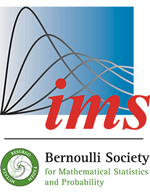Abstract
A large class of sequential change point tests are based on estimating functions where estimation is computationally efficient as (possibly numeric) optimization is restricted to an initial estimation. This includes examples as diverse as mean changes, linear or non-linear autoregressive and binary models. While the standard cumulative-sum-detector (CUSUM) has recently been considered in this general setup, we consider several modifications that have faster detection rates in particular if changes do occur late in the monitoring period. More presicely, we use three different types of detector statistics based on partial sums of a monitoring function, namely the modified moving-sum-statistic (mMOSUM), Page’s cumulative-sum-statistic (Page-CUSUM) and the standard moving-sum-statistic (MOSUM). The statistics only differ in the number of observations included in the partial sum. The mMOSUM uses a bandwidth parameter which multiplicatively scales the lower bound of the moving sum. The MOSUM uses a constant bandwidth parameter, while Page-CUSUM chooses the maximum over all possible lower bounds for the partial sums. So far, the first two schemes have only been studied in a linear model, the MOSUM only for a mean change.
We develop the asymptotics under the null hypothesis and alternatives under mild regularity conditions for each test statistic, which include the existing theory but also many new examples. In a simulation study we compare all four types of test procedures in terms of their size, power and run length. Additionally we illustrate their behavior by applications to exchange rate data as well as the Boston homicide data.
Citation
Claudia Kirch. Silke Weber. "Modified sequential change point procedures based on estimating functions." Electron. J. Statist. 12 (1) 1579 - 1613, 2018. https://doi.org/10.1214/18-EJS1431
Information





